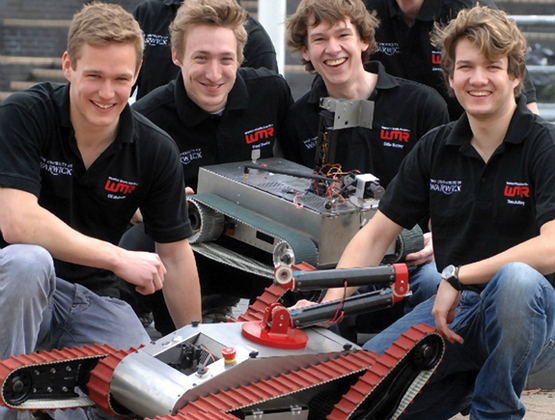31 May 2012
Confidence is the hallmark of Warwick, a habitual innovator that has made a global splash, says Nigel Thrift

From its creation, confidence has been the University of Warwick's watchword. The local community provided the land for the institution, confident that the campus would bring significant economic development to the area. Car magnate Lord Rootes led the campaign to raise the new university's finance, confident that it would deliver significant benefits to manufacturing; and the university itself had the confidence to seek out and recruit leading researchers for the venture.
That confidence was not misplaced. Warwick today is by far the largest and most successful of the universities created in the 1960s expansion.
An example of its success in pursuing an uncompromising selection of the best researchers can be seen in one of its first academic appointments, Sir Christopher Zeeman. Zeeman created and led the Warwick Mathematics Institute, assembling a highly eminent team that made the university one of the UK's leading centres for maths, a status it retains today.
Another high-quality appointment almost single-handedly fulfilled Lord Rootes' expectations by building Warwick's global reputation for transforming manufacturing. Lord Bhattacharyya's leadership of WMG at Warwick (formerly Warwick Manufacturing Group) has played a crucial role in the development and use of technology at an array of global companies, most recently Jaguar Land Rover and India's Tata Motors.
WMG is just one example of how Warwick has focused on real-world problems from its inception. That approach was initially derided by some critics who felt it would affect research quality. It did, but not in the way they expected: just 20 years after its birth, Warwick was ranked in the top 10 of all UK universities for the quality of its research, and the final research assessment exercise in 2008 placed Warwick seventh in the country.
The university has reinforced its commitment to researching the planet's problems through its Global Priorities Programme, which focuses on worldwide challenges.
These are austere times, and Warwick's youth means that it does not have centuries of endowment income, yet it continues to invest in its infrastructure, research and teaching. It can do so because it generates 80 per cent of its own funding. It first attained that freedom through another example of institutional confidence and risk-taking during a previous age of austerity.
In 1980, the academy in the UK faced significant cuts under Margaret Thatcher's Conservative government. Many universities simply implemented the cuts, but Warwick had a different response: it combined some reductions with an aggressive pursuit of opportunities to increase its own earned income to replace the lost funding. It not only did so but also generated additional cash for investment in research and teaching.
At a time of retrenchment across the sector, Warwick was able to embark on one of the largest building and investment programmes in its history. There has rarely been a day since when building or development has not been under way on campus.
However, the most exciting recent development is not on our campus, it's in the Big Apple. Last month, New York mayor Michael Bloomberg announced that Warwick is the only European university in a New York University-led partnership of international universities and companies that have come together to create the Center for Urban Science and Progress in Brooklyn.
Warwick has now found a kindred spirit. It has signed an agreement with Australia's Monash University that will establish both institutions as "globally connected universities".
Monash is a compelling partner for Warwick. Both are children of the 1960s that have had to do it pretty much for themselves, without large endowments or similar forms of largesse. From their earliest days, both have been recognised as pioneering universities, renowned for fast-paced innovation and an entrepreneurial spirit that has brought rapid success.
It is fitting that as a relatively young but high-achieving institution, Warwick looks to high-achieving young people to build on its successes.
It is pursuing a strategy to increase significantly its cadre of postgraduate research students (the numbers of which have already risen 30 per cent over the past five years).
In undergraduate terms, it has reached the point where the level of demand for places means that Warwick can be described as part of an "Ivy League" of UK universities with the highest proportion of students recording grades of at least AAB at A level.
But its search for academic excellence is targeting an even younger audience: its International Gateway for Gifted Youth, an international network for gifted teenagers aged 13 and above, provides high-quality online content plus opportunities to work with top academics and to collaborate with other gifted students. This array of bright young people will help build Warwick, and us all, an even brighter future.
Nigel Thrift is the vice-chancellor of the University of Warwick
Register to continue
Why register?
- Registration is free and only takes a moment
- Once registered, you can read 3 articles a month
- Sign up for our newsletter
Subscribe
Or subscribe for unlimited access to:
- Unlimited access to news, views, insights & reviews
- Digital editions
- Digital access to THE’s university and college rankings analysis
Already registered or a current subscriber?